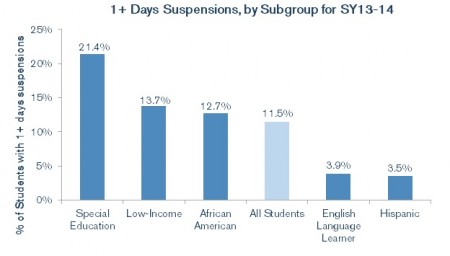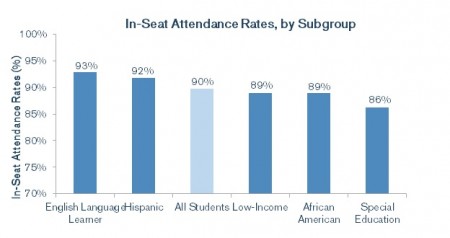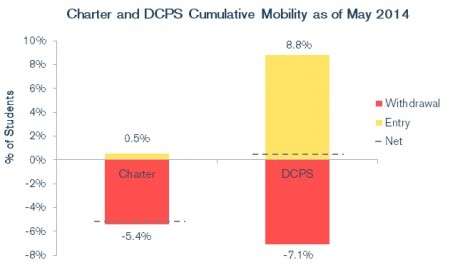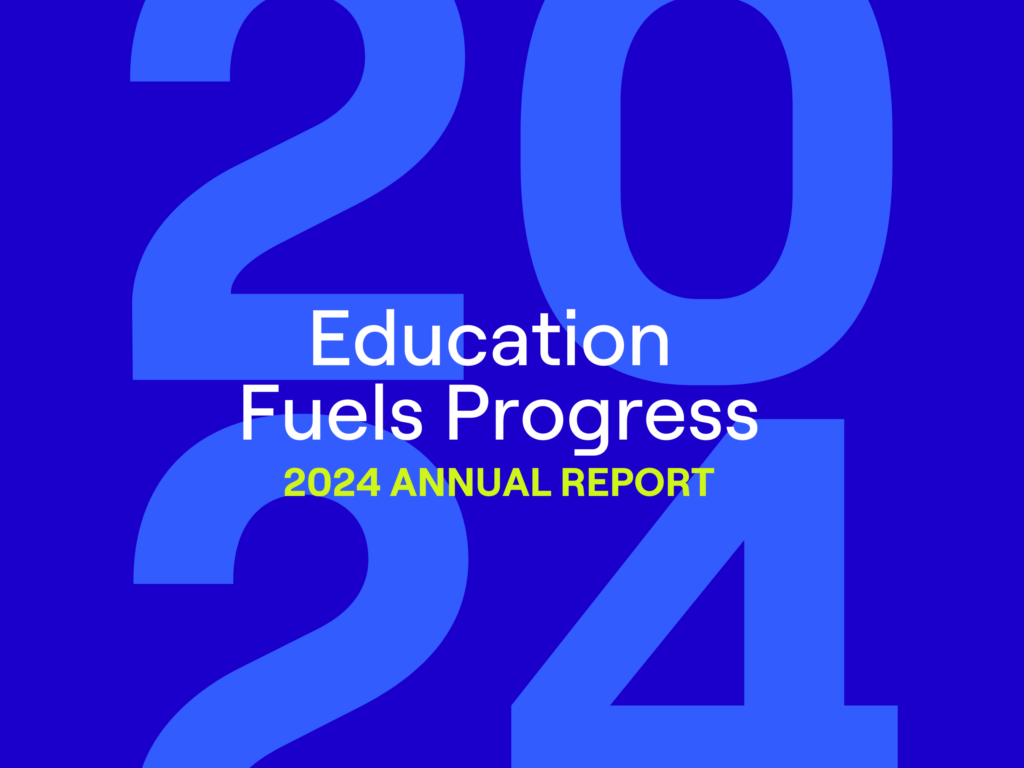Despite major changes in DC’s education reform landscape, the black-white achievement gap remains the largest in the country. According to the 2013 National Assessment of Educational Progress (NAEP), the gap between white students’ proficiency levels and black students’ has widened since 2007 to 55 points, representing years of difference in academic achievement. A similar gap exists between Hispanic and white students, highlighting the issue that DC has struggled to provide an equitable education to its neediest students. Achieving equity in education means that all students receive an education that meets their needs, regardless of what school they attend or their race, ethnicity, gender, family income level, special education status or other factors. Equity goes beyond ensuring that students are performing well on tests, but also looking at how students are being served in a school.
In DC, we have made great strides in creating publicly available, transparent data on equity metrics through a collaboration across multiple organizations. For a long period of time, relevant information was siloed among different education agencies. In DC, where forty-five percent of students attend charter schools, it was especially difficult to compare schools across both district and charter schools. In 2013, DC Public Schools (DCPS), the DC Public Charter Schools Board (PCSB), the Office State Superintendent of Education (OSSE), the Office of the Deputy Mayor of Education, and NewSchools Venture Fund partnered together to tackle the task of producing equity reports for every public school in the city.
The result of this collaboration is a collection of equity reports, published for every school in the city, which compare the same data across all schools and by student subgroups. Now in its second year, these reports are meant to capture important information that reflects how well a school is doing in providing an equitable education for its students. The reports include the following data, each of which is shown for individual student subgroups:
- Performance: Student achievement as measured by proficiency on the state assessment, student academic growth and high school graduation rates,
- Discipline: Suspension and expulsion rates,
- Attendance: The average percentage of students attending school on a given day, and
- Mobility: Month-by-month withdrawal and entry data.
This data, housed on the LearnDC website, has given educators and policymakers across the city new, more nuanced information to help shape not only our thinking about how schools are performing, but allows us to understand how different populations of students are being served. For example, our initial analysis of data from the 2013-14 school year looked at the rates at which students in different groups received one or more days of suspensions throughout a school year. In figure 1, we see that citywide, suspension rates are highest among special education students. Moreover, low-income and African American students also have higher rates compared to DC students overall.
Figure 1.

A similar analysis was completed for attendance rates by subgroup. In figure 2, the attendance rates by subgroup are shown and while the rates among all are relatively high (the overall citywide average is 90% for in-seat attendance), special education students have relatively lower attendance rates.
Figure 2.

The equity reports also show data on mobility, which measures students entering and leaving schools within the year. Figure 3 shows the change in withdrawal and entry rates of schools by sector during the 13-14 the school year.
Figure 3.

While the equity reports do not provide any information about why students are being served differently, they do provide a starting point for further reflection, potential recommendations, and goal setting. We’re hopeful that making this data transparent will help teachers and school leaders learn from the success of peer schools, and redouble their efforts to ensure equity for all DC students.
The individual equity reports from each school are available on the LearnDC website at www.learndc.org.


